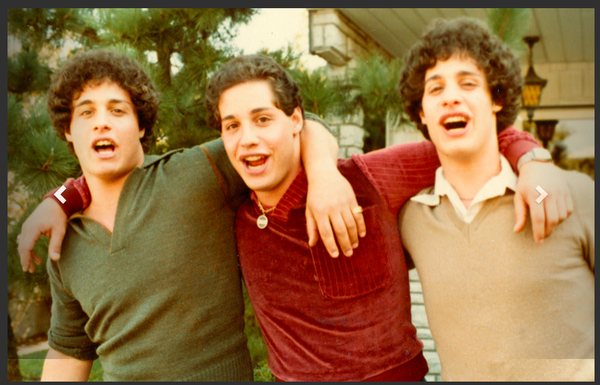Highlights
Editor’s Note: This week, while our editor is on vacation, we are reposting some old blog favorites. The following post originally appeared on July 21, 2014.
“There’s just a big huge difference between loving somebody and being in love with somebody,” Tanya explained to me. When you love somebody, you care for them—like you love a friend, or a brother. But when you are in love with someone, “you can’t wait to be around them, you still get the butterflies—when they’re at work you can’t wait to see ‘em, can’t wait till they come walking through the door.”
Tanya’s philosophy of love has guided her own relationship choices, namely her decision to leave her husband of nine years for the man next door. She and her husband have two children together and are great friends, she says, but she no longer feels in love with him. “I love him, but I’m not in love with him,” she explained. “I love him as a friend, as the father, but I don’t feel that connection as I used to…like, not at all.”
Tanya’s views were common among the 75 working-class young adults we interviewed as part of the Love and Marriage in Middle America Project. Many of the young adults expressed the idea that love should arise effortlessly, should switch on like a light bulb. And more or less it should stay that way, without additional effort, they thought.
Stanford psychologist Carol Dweck’s widely-acclaimed research on mindset suggests that these beliefs do not bode well for the longevity of young adults’ relationships. In the chapter on relationships in her book, Mindset: The New Psychology of Success, Dweck argues that the difference between what she terms the fixed mindset and the growth mindset explains why some people are able to build lasting relationships while others are not.
Those with a fixed mindset see their qualities as fixed, rather than things that can be cultivated through effort. In their view, love should involve “instant, perfect, and perpetual compatibility.” Those with a fixed mindset about love, like Tanya, believe that if you have to work at it, it wasn’t meant to be. As one divorced woman I interviewed put it, “Love is effortless. I think if you have to work at it, then it’s not love.”
Those with a fixed mindset about love believe that if you have to work at it, it wasn’t meant to be.
As Dweck points out, every relationship expert disagrees. Psychiatrist Aaron Beck, for instance, counts this belief among the most destructive to relationships.
The growth mindset has a different view of love, Dweck writes: “In the growth mindset there may still be that exciting initial combustion, but people in this mindset don’t expect magic. They believe that a good, lasting relationship comes from effort and from working through inevitable differences.”
The good news is that Dweck and her team of researchers have shown that mindset can be effectively taught. While working-class young adults often feel like the forces and institutions of the world are stacked against them, Dweck’s research contains a message of empowerment. “My work is part of a tradition in psychology that shows the power of people’s beliefs,” she writes. “This tradition also shows how changing people’s beliefs—even the simplest beliefs—can have profound effects.”
If young adults can change the way they think about love, it will go a long way in equipping them to love well.
So what is the best way to help young adults to change their mindset about love? Is it an educational workshop? A unit of classes taught in high school? A marketing campaign with public service announcements and a social media strategy?
While I wouldn’t be opposed to any of those things, I’d suggest that the most effective thing we could do is to tell a different story about love, one that can act as a truer guide for young adults like Tanya.
“Story” is something of a buzzword these days, but as Rod Dreher points out in his piece “Story Lines, Not Party Lines,” the stories we tell have power to shape the moral imagination. He who tells the best story wins.
If you don’t know any happy couples, fictional relationships provide the template for love.
It’s cliché to lament the toxic messages of Hollywood. And yet it’s true that fictional relationships rush in to fill the vacuum when families and institutions fail to pass on better messages. That goes double for young adults who have few positive marriage models in real life (just one piece of evidence: 43 percent of Americans with high school diplomas but no college degrees say that marriage has not worked out for most people that they know). If you don’t know any happy couples, fictional relationships provide the template. And often—though not always, as in notable exceptions like The Story of Us—the story they tell about love aligns more with the fixed mindset than the growth mindset.
In my own life, I’ve experienced the influence of story. As a 22-year-old newlywed I was walking the fairgrounds with my husband David, noticing all the young couples in love. “Remember when we were that in love?” David asked. I knew what he meant—we both knew we shared a deep love, but of course we didn’t have the same reckless emotion we’d had at the beginning of our courtship. Still, I was offended.
I hadn’t realized how much the Hollywood script had insinuated its way into my thinking. If you had asked me what I thought about love, I would have told you that love takes effort, that it is a lifelong process, that feelings come and go, that love is a choice—all the things I had been taught growing up in a conservative Christian home, all the things I had seen my parents and grandparents model.
And yet, emotionally, I had been shaped by chick flicks and romance novels more than I realized. As Dreher explains, “stories work by indirection: not by telling us what to believe but by helping us to experience emotionally and imaginatively what it is like to embody particular ideas.” While I had been taught certain points about love, the narrative I had heard over and over in the media I consumed was formative in my emotional life and on my moral imagination—and it was that influence that left me feeling slightly disappointed after a year of marriage. I had known that love would change, that butterflies and fireworks and all those things weren’t the stuff of real love, and yet as my love for David became a daily thing and not a mountain-top experience, I thought back to the stories I had imbibed and I felt cheated, wronged somehow. David owed me more. Love was supposed to be sublime and effortless and perpetually passionate.
I was a bit surprised that I found myself thinking that way, when I knew better.
Thankfully I had enough good models of lifelong love, enough friends who had walked the path of married love before me, enough good books (C.S. Lewis’s The Four Loves among them) to help me navigate love post-honeymoon. I also had a husband who was my best friend, and one who I trusted would always fight for our love.
But the experience made me realize the need for fiction and film and song to tell a more true-to-life story about love. Not necessarily more happy stories, scrubbed of the drama that makes us human, but stories in which protagonists wrestle with questions about love’s meaning and choose to love despite difficulties, both ordinary and extraordinary. All too often, the popular narrative will bring a character to a crisis point—a choice between duty and stability on the one hand, happiness and freedom on the other—and the character predictably chooses the latter. Think of Meg Ryan’s character in Sleepless in Seattle, choosing happiness and fireworks with Tom Hanks’s character, rather than remaining with her nice but dull fiancé. Or Elizabeth Gilbert’s Eat, Pray, Love, in which she liberates herself from all obligations (including her husband) in a journey to find herself. I’m interested in narratives that illuminate the complexities of these choices, that show characters finding a third way between the tensions that define us.
For as Dreher points out, good stories embody the ambiguity of real life. Perhaps that is why I was so captivated by the early seasons of Mad Men. It is a story crafted with ambiguity. The characters are complex, the story masterfully embodies the particular ideas that made an era, and the characters must grapple with the reality that doing what they want doesn’t always mean getting what they want. Stories are not simply tools to spread an ideology. They tell us something about what it means to live.
A strategy that relies only on talking points and political strategy might win short-term victories, but cultural change is necessary for achieving long-term change. And the stories we tell shape culture. If we are concerned about the marriage gap and wider inequality and the future prospects of young adults like Tanya, then, we must use our creative energies to tell a different story about love.
















